Corn is not considered a difficult crop to grow. But it also requires certain knowledge; in order to get a good harvest of full-sized cobs, the plants must be properly cared for. So where should you start planting corn?
You need to start with selecting seeds. It is better to plant hybrids. They are more productive than varieties, more resistant to diseases and, as a rule, are treated against them. Such seeds should not be disinfected or soaked before planting.
Sweet corn varieties
You can buy sweet corn hybrids in stores: Boston, Trophy, Madonna, Legend and others.
|
Boston: mid-season, medium-growing variety. Consistently high yield. Cob weighing 200 g. The length of the cob is 20 cm. The grain is yellow. Wonderful taste. |
|
|
Madonna: early variety. Height 1.6 - 2 m. Cob weighing up to 200 g. The length of the cob is 18 cm. The grain is yellow. Excellent taste. |
|
|
Legend: early ripening variety. Height 1.7 m. Cob weighing up to 250 g. The length of the cob is 20 cm. The grain is yellow-orange. Good taste. |
|
|
Trophy: mid-early variety. Height 2m. Cob weighing up to 280 g. The length of the cob is 20 - 22 cm. The grain is yellow-orange. Excellent taste. |
Preparing the site for planting corn.
You should worry about preparing the area for corn in advance. And she loves humus structural soils, which quickly warm up in the spring and allow air and water to pass through well. It is advisable to enrich the area for autumn digging: 0.5 buckets of humus or compost, 2 tbsp. spoons of superphosphate, 1.5 tbsp. spoons of potassium sulfate per sq. m. If fertilizers were not applied in the fall, they are scattered in the spring and covered during deep loosening. During the growing season, the plant is fed with organic infusions.
Corn is often grown at a summer cottage to create scenes for vegetable beds and protect them from the wind and midday sun. Beans and beans can be planted with corn. It serves as a support for legumes, and itself receives nitrogen from them. Pumpkin is considered a good neighbor for it, the leaves of which protect the soil from drying out and overheating.
How to plant corn in the country
Plant corn only in soil that has warmed up to 8-10 degrees. Most often this is the end of April - the first ten days of May.The depth of seed placement depends on the timing of planting. With earlier sowing it is 5-6, with later - 8-10 cm. This difference is explained by the need to create favorable conditions for seed germination (temperature, soil moisture).
You can plant corn in rows (60-70 cm is the distance between the rows, 15 cm is the distance in the row, after thinning - 30 cm), or you can divide the area into squares (70x70 cm) and plant 2-3 grains at the intersections of each , in order to thin out the seedlings at the stage of the second true leaf, leaving the strongest ones. The last element of agricultural technology is mandatory, without it it is impossible to grow productive plants.
Is it worth growing corn through seedlings?
Corn, as a rule, is not grown from seedlings. But if you want to try sugar cobs early, you can plant the seeds in cassettes in April at home or in a greenhouse, and then plant them later, without disturbing the root ball, in warmed soil. Seedling corn will yield an earlier harvest not only due to the “run in time”, but also because it develops faster when the day is not very long.
Corn care
During the growth period, the seedlings are loosened and lightly hilled. The greatest need for water begins shortly before the panicles are thrown out and continues until the grains are fully formed on the cob. Many gardeners believe that caring for corn is extremely simple - plant it, water it, weed it. But in fact, there are some points in caring for the “queen of the fields” that few people know about.
Productivity largely depends on the efficiency of pollination. And it can get worse if the weather is hot (over 30 degrees) during the flowering period. Pollination may not take place even if, by the time the female flowers begin to bloom, the male flowers have time to bloom.And this is quite likely, since male flowers are ready several days earlier than female ones.
Poor pollination is inevitable if corn is planted in one row and all plants begin to flower at almost the same time. The result is cobs with single grains. In order for pollination to proceed normally, corn is sown in an array (even if small) or with a gap in time. For example, we will plant the bulk of the grains at the end of April, and a few grains after 1-2 weeks, so that the corn bed is well pollinated.
During flowering, it is advisable to tilt the panicles with staminate flowers and shake them over the future ears. They do this in the morning.
When to Harvest Corn
Determining the time for harvesting cobs of milky ripeness may cause some difficulty. External signs of their readiness: a drying edge on the upper layers of the wrapper, which by this time become less moist, tightly fits the cobs; the pistillate filaments at the tip of the cob turn brown; all the grains on the cobs acquire a yellow color, are well executed, and fit tightly together. If you press on the grain with your fingernail, a white liquid will flow out.
Observation helps to roughly determine the harvesting time: corn grains reach milky ripeness 20-25 days after the female flowers bloom. The milky ripeness phase lasts only a few days.
The cobs are harvested in several stages. So that they do not lose their sugar content, they are immediately boiled or canned or frozen. It is known that the most delicious cobs are those that fall into the pan straight from the garden.
You can grow corn even in the smallest areas. There will always be a place for it in the dacha, but it is necessary to eat it.It is not only tasty, but also very useful: it regulates digestion processes, helping the absorption of other products, and prevents the development of atherosclerosis. Extracts from corn silk help in the treatment of diseases of the liver, gall bladder, etc.
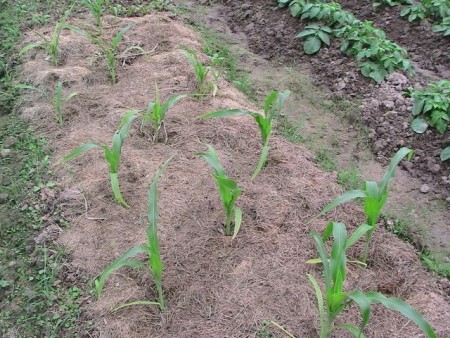
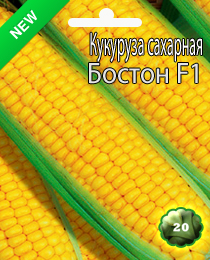
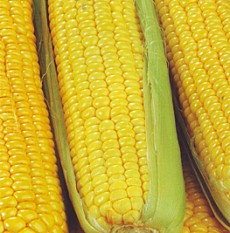
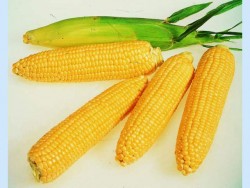
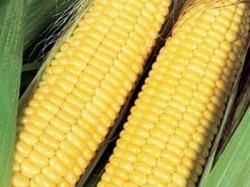
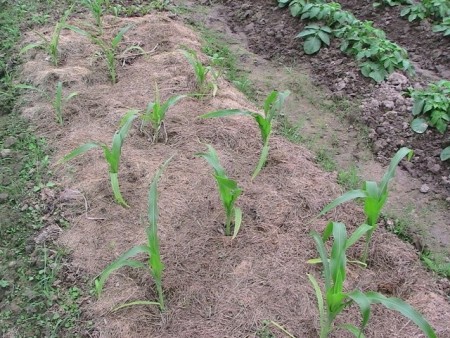
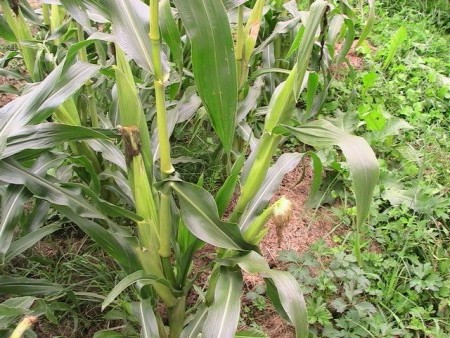

 (1 ratings, average: 4,00 out of 5)
(1 ratings, average: 4,00 out of 5) CUCUMBERS NEVER GET SICK, I'VE BEEN USING ONLY THIS FOR 40 YEARS! I SHARE A SECRET WITH YOU, CUCUMBERS ARE LIKE THE PICTURE!
CUCUMBERS NEVER GET SICK, I'VE BEEN USING ONLY THIS FOR 40 YEARS! I SHARE A SECRET WITH YOU, CUCUMBERS ARE LIKE THE PICTURE! You can dig a bucket of potatoes from each bush. Do you think these are fairy tales? Watch the video
You can dig a bucket of potatoes from each bush. Do you think these are fairy tales? Watch the video
 How our fellow gardeners work in Korea. There is a lot to learn and just fun to watch.
How our fellow gardeners work in Korea. There is a lot to learn and just fun to watch. Eye trainer. The author claims that with daily viewing, vision is restored. They don't charge money for views.
Eye trainer. The author claims that with daily viewing, vision is restored. They don't charge money for views. A 3-ingredient cake recipe in 30 minutes is better than Napoleon. Simple and very tasty.
A 3-ingredient cake recipe in 30 minutes is better than Napoleon. Simple and very tasty. Therapeutic exercises for cervical osteochondrosis. A complete set of exercises.
Therapeutic exercises for cervical osteochondrosis. A complete set of exercises. Which indoor plants match your zodiac sign?
Which indoor plants match your zodiac sign? What about them? Excursion to German dachas.
What about them? Excursion to German dachas.